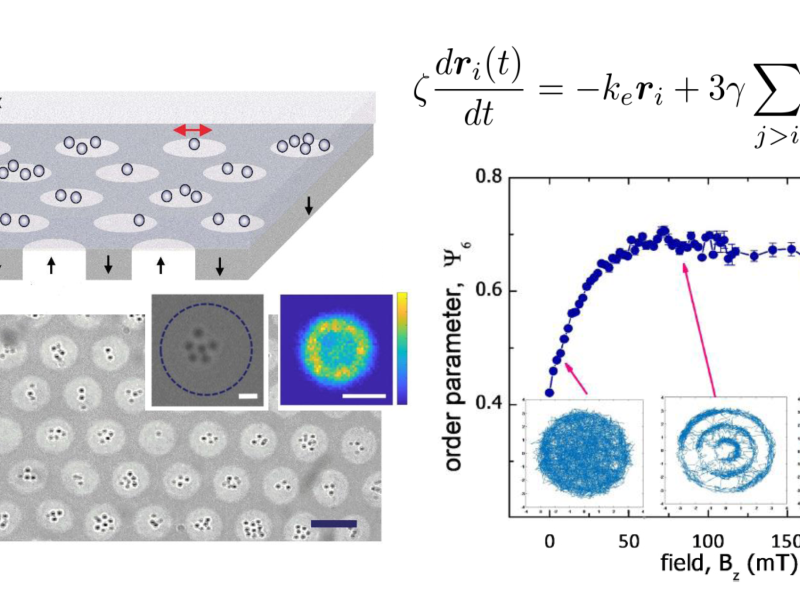Assembling nanoparticles on surfaces has great technological potential. The ability to stably assemble fluctuating nanoparticle clusters presents a major challenge. Using theory to rationalize the experiment, Arthur Straube, a theoretician from ZIB, and Pietro Tierno, an experimentalist from University of Barcelona, have joined their efforts to demonstrate a technique to stably confine in two dimensions clusters of interacting nanoparticles via size-tunable, virtual magnetic traps. They use a triangular lattice of ferromagnetic domains within a ferrite garnet film. The theory suggests that the magnetic, field-tunable confinement is effectively harmonic and pairwise interactions are of dipolar nature, leading to central, strictly repulsive forces. For clusters of magnetic nanoparticles, the stationary collective states arise from the competition between repulsion, confinement and the tendency to fill the central potential well. Using a numerical simulation model as a quantitative map between the experiments and theory, we explore the field-induced crystallization process for larger clusters and unveil the existence of three different dynamical regimes. The results are published in Nature Communications.
Publication:
P. Tierno, T.H. Johansen, A.V. Straube,
Thermally active nanoparticle clusters enslaved by engineered domain wall traps,
Nature Communications 12, 5813 (2021)
DOI: 10.1038/s41467-021-25931-7
